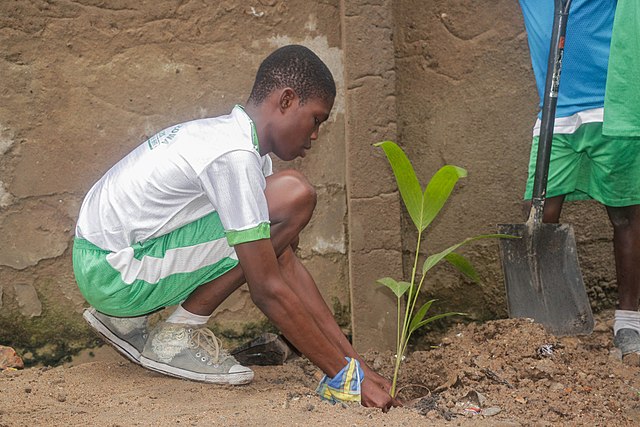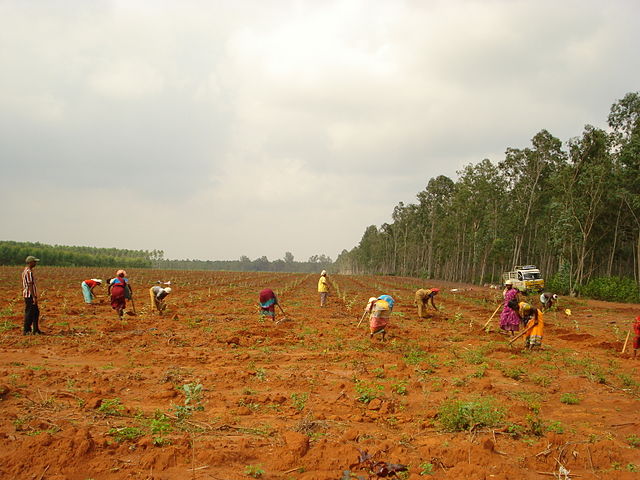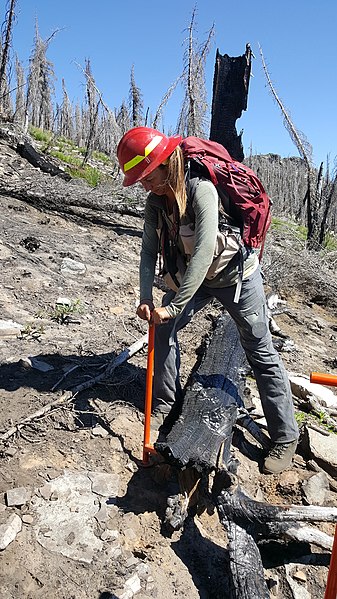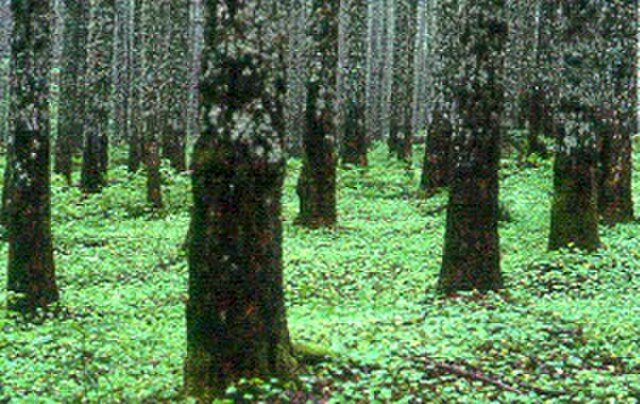Tree planting is the process of transplanting tree seedlings, generally for forestry, land reclamation, or landscaping purposes. It differs from the transplantation of larger trees in arboriculture and from the lower-cost but slower and less reliable distribution of tree seeds. Trees contribute to their environment over long periods of time by providing oxygen, improving air quality, climate amelioration, conserving water, preserving soil, and supporting wildlife. During the process of photosynthesis, trees take in carbon dioxide and produce the oxygen we breathe.
A tree planter in northern Ontario
Tree planting is an aspect of habitat conservation. In each plastic tube, a hardwood tree has been planted.
Tree planting in Ghana
A eucalyptus plantation in final stages at Arimalam.
Reforestation is the practice of restoring previously existing forests and woodlands that have been destroyed or damaged. The prior forest destruction might have happened through deforestation, clearcutting or wildfires. Two important purposes of reforestation programs are for harvesting of wood or for climate change mitigation purposes. Reforestation can also help with ecosystem restoration. One method for reforestation is to establish tree plantations, also called plantation forests. They cover about 131 million ha worldwide, which is 3 percent of the global forest area and 45 percent of the total area of planted forests.
A forest, six years after reforestation efforts
Reforestation in progress: Direct-sowing of seed in a burned area (after a wildfire) in the Idaho Panhandle National Forest, United States.
A pine plantation in the United States
A plantation of Douglas-fir in Washington, U.S.








